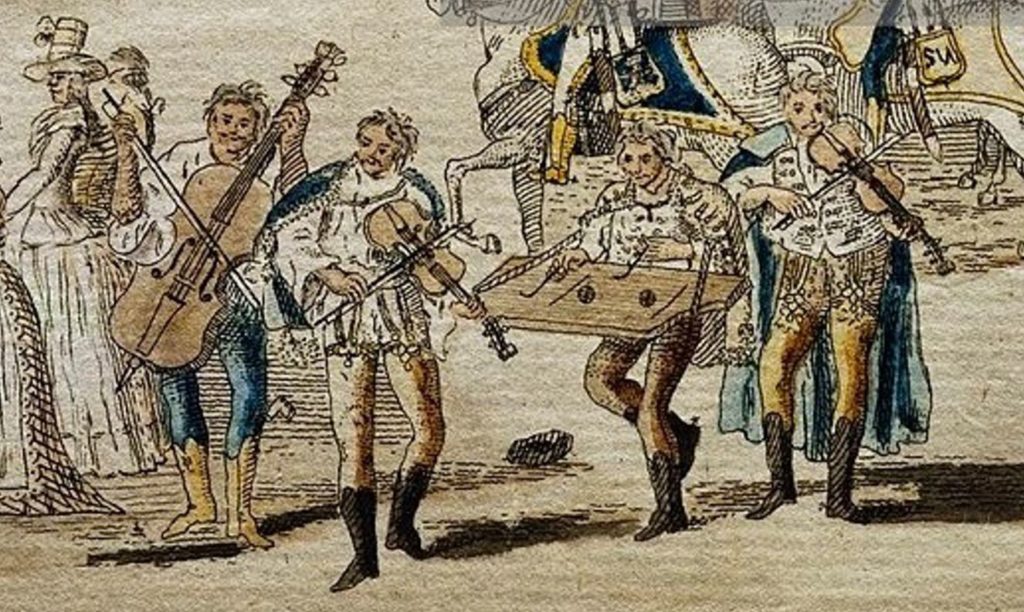
by Thijs Bonger
The July newsletter was all about the sun. This prompted me to look at Haydn’s revolutionary and trendsetting set of six string quartets in his opus 20. Number 1 from that series was discussed extensively in that newsletter. And now it’s the turn of numbers 2, 3 and 4. Democracy and justice in string quartet land!
And that’s two
The second quartet, in C major, is a feast for cellists. Before Haydn wrote this piece they almost always had to settle for the unobtrusive bass part. But things are different here. Immediately in the opening movement, the cellist takes the lead and plays the melody higher than the second violin. The viola takes care of the bass part. This creates an unusual timbre that commands attention. “Capriccio” is written above the second part, with which Haydn wants to indicate that he gives free rein to his imagination. After the curious and solemn introduction with many trills, the cello is again allowed to play the melody. What follows is reminiscent of a movement from a Baroque opera, complete with arias and recitatives. Haydn is so busy in this part that he finds it difficult to come up with a suitable ending for it. That is why he ends it with a somewhat crude minuet. The finale consists of an ingeniously composed fugue with four themes. Haydn makes the listener extra curious by letting most of it be played mysteriously and softly. Only towards the end are the strings allowed to break loose.
Capricious and fragmentary
Number 3 in G minor is very different in character. The opening movement is capricious and quite fragmentary. Overall, it is sad in character but there are also forays into the grotesque. Haydn often changes his mind and regularly stops in the middle of a musical sentence. We often encounter such a meandering course in the oeuvre of Carl Philipp Emanuel Bach, who was idolized by Haydn. The minuet is at least as bleak as the first part. The middle part, the trio, brings some refined relaxation before the minuet returns and finally ends in nothingness. The profound slow movement is a fantasy based on a passionate melody. Every time that melody returns, Haydn ensures that new timbres arise. In the finale Haydn combines sadness with excitement. Just like in the opening movement, Haydn regularly jumps from one subject to another.
Undulating
Number 4, in D major, is probably the most popular quartet in the series. If you hear the peacefully undulating opening theme, you have no idea that you will also be treated to music with a completely different character. Suddenly the Primarius dashes off with a virtuoso flash, accompanied by four fierce chords from the other strings. And in the rest of this part, Haydn delicately interweaves these two contradictory moods. Serene and exciting. In the meditative, slightly sad variation part that follows, we can hear that the equality of the four strings is really an issue for Haydn. The second violin is allowed to play the melody in the first variation and then in the variation follows he switches the roles completely. The cello has the melody, while the viola plays the bass notes. Above the minuet it says “alla zingarese”, “in gypsy style”. The Esterhazy Palace, where Haydn usually worked, is far away from everything – Vienna is 80 km away, which meant 2 days of traveling. Haydn once said that he had to be original, simply because he heard so little music by other composers. That isolated location also meant that acquaintances rarely came to visit. Those who did pass by regularly were itinerant gypsies. Haydn was so fascinated by their rhythmically free and improvised way of making music that he wrote all kinds of pieces with a gypsy influence. This minuet is one of them. Because of all the contrary accents it is an assertiveness test for the strings. You canalso almost see Haydn chuckling at people trying to dance to this and tripping over their own feet. In the next part – the trio – the cello is allowed to solo again. The exuberant gypsy atmosphere also continues into the sparkling finale.
The next newsletter will be about numbers 5 and 6.








